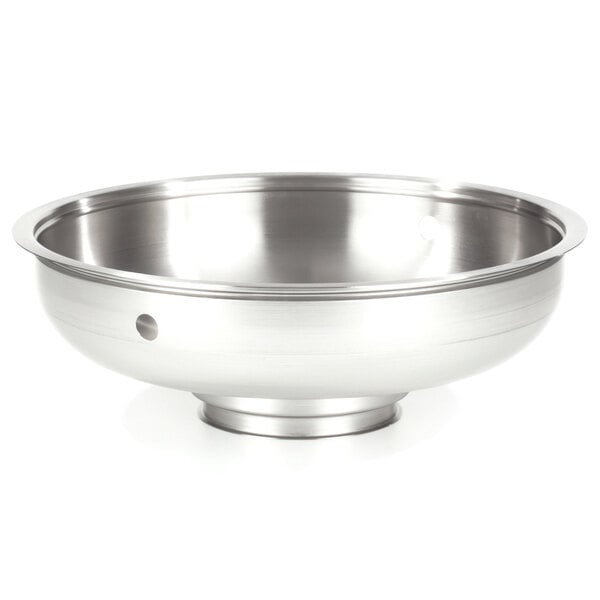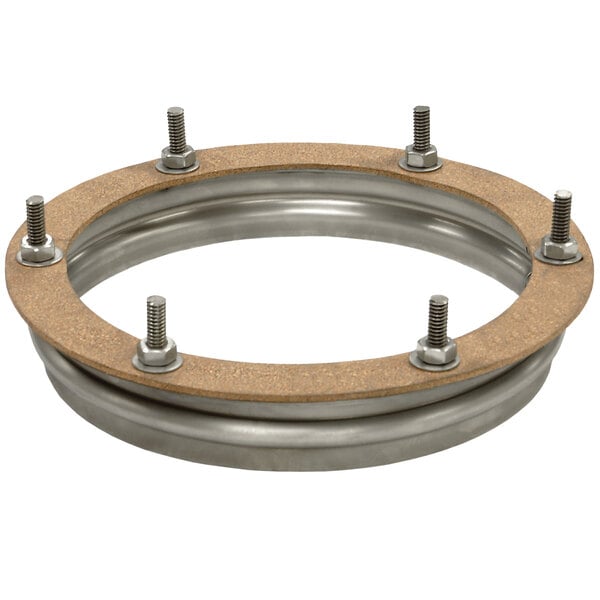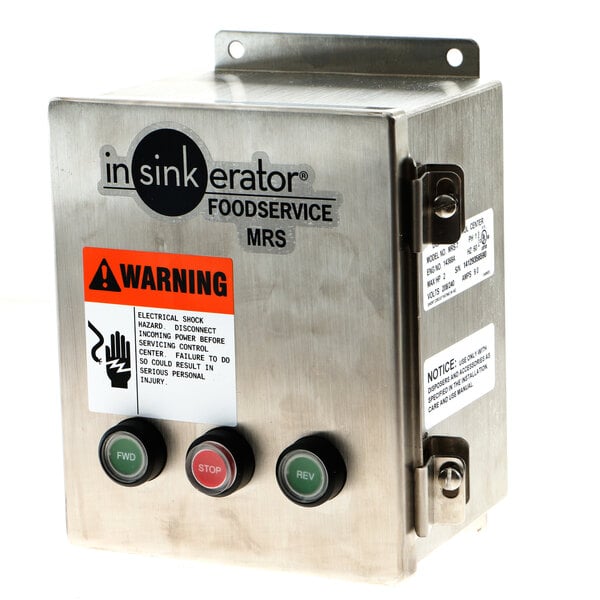
Garbage Disposal Buying Guide
Shop All Commercial Garbage Disposals
The horsepower rating determines the size of a garbage disposal. When deciding on a garbage disposal, consider the foods you will dispose of and how much you will dispose of, and then compare that to the horsepower rating of your unit. If you're providing limited service and just grinding up fruits and vegetables, a garbage disposal with a maximum of 1 hp should work for you. Cafeterias, butcher shops, or facilities that dispose of large amounts of meat should use 5+ hp garbage disposals. Most full-service restaurants fall somewhere in the middle.
Each manufacturer will have its own criteria to help you rate what size garbage disposal you need for your application, and you should use that literature to finalize your decision.
Garbage Disposal Horsepower
Use the chart below to easily visualize what garbage disposal horsepower you will need based on the type of waste you are disposing of and the volume of your establishment.

Garbage Disposal Special Features
There are a few key features that you may want to consider when buying a commercial garbage disposal:
- Auto-Reverse: Allows the disposer to change the grind direction automatically to clear jams. Look for this in the control packages. More basic models will have a manual reverse or no reverse.
- Water-Saving Modes: Some manufacturers offer models with water-saving control packages that can reduce the amount of water going down your drain with each use.
- Noise Reduction: This is important if your kitchen layout makes it easy for sound to travel between the warewashing area and the front of the house. Garbage disposals are noisy, so having features, such as additional components or insulation, that help to reduce that noise will improve the ambiance for customers and employees.
The diagrams below show some popular disposer setups to help you envision how a new one might look in your kitchen! Dish rooms that do most of their pre-scrapping in a compartment sink will probably find it more helpful to install their disposer there. If you do most of your pre-scrapping at a soiled dish table or a sink with a drainboard, then installing a scrapping cone will likely make more sense.
Be aware that most manufacturers do not recommend connecting the drain on your disposer to a grease trap.
Disposals come with options to match virtually any need, and if you are not sure where to start, our knowledgeable customer solutions team can help you find an option that works for you.
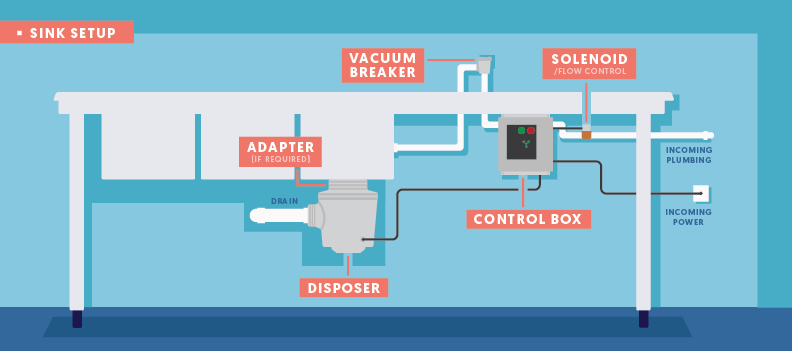
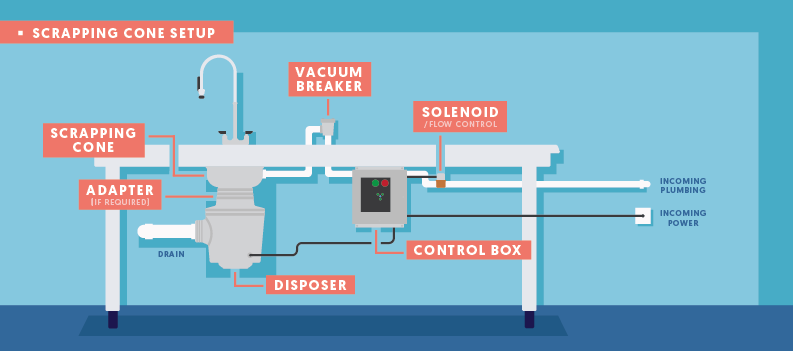
For light cleaning, grind a few ice cubes and lemon through the disposer to deodorize any bad smells. For heavy-duty cleaning jobs, turn off the disposer and clean with a stiff brush and a solution of soap and hot water. As with any equipment, though, your owner's manual is the definitive source on how to care for and maintain your disposer, and you should defer to those recommendations.
Garbage Disposal Maintenance
Below are some maintenance tips to follow to ensure your garbage disposal is properly cared for.
- Run the disposer before loading. Start the disposer before feeding waste into it, and load the waste in at a steady pace. Overloading it with lots of food at once or pre-loading the grind chamber with food can cause clogs or jams.
- Allow the disposer to run a few minutes after disposing of all food waste to completely flush out the interior.
- Never reach in the disposer with your hands. If you need to get an object out of the grind chamber, make sure the disposer is off and use tongs, pliers, a screwdriver, or other tools to grab it.
- Do not put grease or oil in the disposer, as this can clog the drain.
Garbage disposals offer several benefits for commercial applications, but before buying, you need to educate yourself on what these machines do and do not do.
- Decreased costs for solid waste removal and garbage bags
- Your drain is less likely to clog, which means fewer costly plumbing bills
- Less waste sitting around means fewer odors, which also makes your facility less attractive to pests
- Much easier to get rid of food scraps in the disposer than to scrape them into the trash can
- Less waste in the trash can means fewer trips to the dumpster for your staff
- Increased costs for maintenance and water/electric use
- Pro installation is recommended for optimal safety and warranty compliance
- If sound travels easily from your sink to the dining area, a disposer could disrupt the ambiance
- Some areas may restrict use - check with your municipality for applicable regulations
- Some items cannot be put in the disposer, so correct training for staff is important
Below are some popular garbage disposal parts and accessories that you can use to enhance the functionality of your disposal or keep it in top working condition.
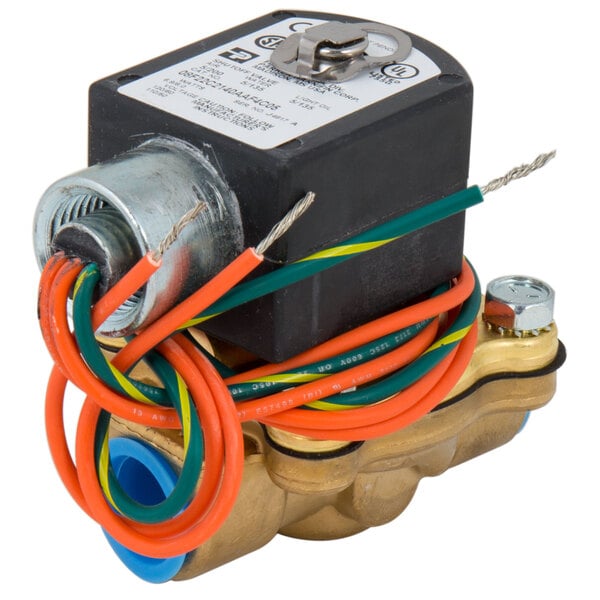
Ensures water flows into the disposer at the proper time.
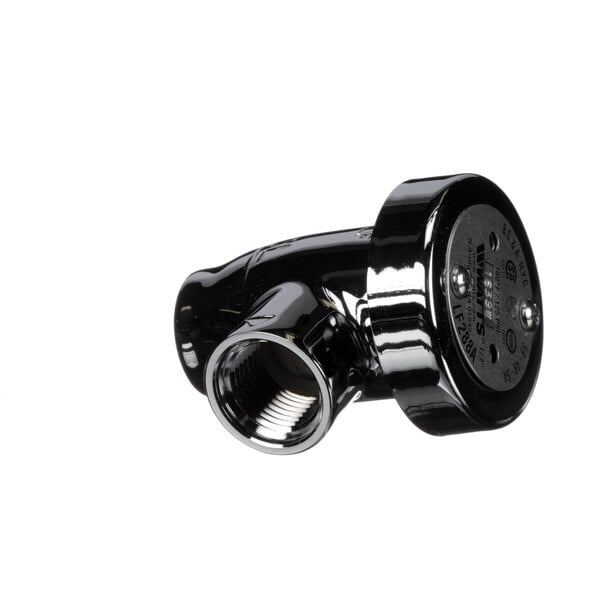
Prevents dirty water from backflowing into your portable water supply.
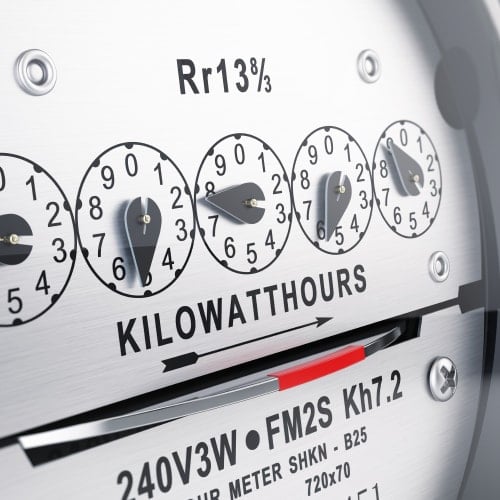
Due to the increase in water and electricity used to run a garbage disposal, your utility bill will inevitably go up. Read on to learn how much garbage disposals will affect your utility bills.
Water: In general, you can expect smaller units (2 hp and less) to utilize around 5 GPM (gallons per minute) and larger units (3 hp and over) to utilize around 8 GPM. Exact usage figures will vary, so check the literature for your specific model number.
Electricity: High-wattage units will cost more to operate than low-wattage units, and running the disposal more frequently will also increase operating costs.
The equation below can be used to get a more accurate figure for potential run costs in your establishment, based on the national average electricity rate of $0.166 per kilowatt-hour. We have also provided a breakdown of estimated daily run costs for the different disposal horsepower ratings.
["Average Kilowatts / Hour" Figures] X [Your Electric Rates (in Kilowatt-Hours)] X [Hours Per Day]
Average Kilowatts/Hour: 0.8 - 1.2
Daily Run Costs ($0.166 per Kilowatt-Hour)
1 Hour: $0.13 - $0.20
2 Hours: $0.26 - $0.40
3 Hours: $0.40 - $0.60
Average Kilowatts/Hour: 1.2 - 1.6
Daily Run Costs ($0.166 per Kilowatt-Hour)
1 Hour: $0.20 - $0.27
2 Hours: $0.40 - $0.53
3 Hours: $0.60 - $0.80
Average Kilowatts / Hour: 2.0 - 2.4
Daily Run Costs ($0.166 per Kilowatt-Hour)
1 Hour: $0.33 - $0.40
2 Hours: $0.66 - $0.80
3 Hours: $1.00- $1.20
If your area has restrictions on using disposals, other options offer many of the same benefits. Always check your area’s regulations to see what is permitted.
Pulper/Waste Reduction System
A good option for high-volume applications, a pulper/waste reduction system uses a disposal to grind up waste, but rather than sending everything down the drain, the processed waste goes to a de-watering tank. Water is separated from the waste and sent down the drain, while the remaining solid waste is ejected into a trash can with its mass and size greatly reduced.
Scrapper/Waste Collector System
Allow your staff to scrap and rinse dishes in one step with a food scrapper/waste collector. This system replaces a traditional pre-rinse setup by recirculating water over a scrapping basin. Water-soluble items are ultimately sent down the drain, and the remaining waste is caught in a collection basket that can be easily removed, emptied, and replaced.
Compost Bins
Creating a compost program in your restaurant is a sustainable way to dispose of food waste. Kitchen compost bins can fit seamlessly into existing kitchen workflows and are used to dispose of food scraps from prep work, overly ripe fruits, coffee grounds, and coffee filters.
Related Resources
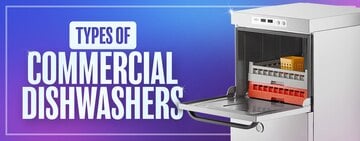
Types of Commercial Dishwashers
Ensuring the cleanliness of your dishes and glasses is crucial for the sustainability of your business. The way you wash your dishes and glassware can mean the difference between passing or failing your health inspection and is pivotal in shaping your establishment's reputation. Selecting the best commercial dishwasher is vital to upholding compliance with federal, state, and local regulations and supporting the continued growth of your business. Shop All Commercial Dishwashers
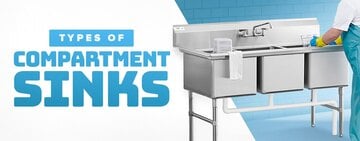
Types of Compartment Sinks
Compartment sinks are an essential piece of equipment in any commercial kitchen, providing a convenient and efficient way to wash and clean dishes as well as prep food items. These sinks can come with multiple compartments, each serving a specific purpose and function. Commercial kitchens are subject to strict health and safety regulations, and having the right type of compartment sink is crucial to maintaining a clean and sanitary workspace. Compartment sinks are available in various sizes and configurations to suit different needs and kitchen layouts .

Top 10 Energy Conservation Tips for Restaurants
Reducing your restaurant's overall energy consumption not only lowers your utility costs , it's also better for the environment. Many food service professionals have been adopting energy conservation methods for the past decade and have drastically cut their energy use and expenses. Here, we've outlined energy conservation tips that will reduce your water and electricity use. 10 Energy Conservation Methods It can be easier than you think to reduce energy consumption in your kitchen with our energy-saving methods! Here are our top 10 tips for conserving energy in your business. Click any of the links below to read more about our energy-conservation tips: Energy Efficient Equipment Equipment Maintenance Reduce Water Consumption Efficient Ligh
- Topics 1346
- Industrial 55
- Troubleshooting Guides 21
- Restaurant Management 128
- Bar Management 55
- Catering Tips 35
- Bakery Management 42
- Food Trucks & Concessions 49
- Advertising & Marketing 37
- Eco-Friendly Tips 11
- Facility Layout & Design 41
- Coffee Shop Tips 28
- Installation & Maintenance 51
- Janitorial & Pest Control 30
- Safety & Sanitation 88
- Startup Tips 104
- Menu Design 10
- Kitchen & Cooking Tips 81
- Hospitality Management 23
- Pizza & Sandwich Shop Tips 36
- Smallwares 37
- Food Prep 88
- Tabletop Items 17
- Disposables 22
- Calculators & Tools 6
- Consumables 52
- Warewashing & Laundry 18
- Cooking Equipment 90
- Food Storage & Refrigeration 51
- Beverage Equipment 34
- Office Supplies 6
- Resource Type
- In-Depth Articles272
- Buying Guides296
- How-Tos93
- Product Reviews77
